Walking the Camino de Santiago
- Return flights
- 7 nights in 3 & 4-star hotels
- 13 included meals: 7 breakfasts, 2 lunches, 4 dinners
Croatia, a stunning country located on the picturesque Adriatic coast, is renowned for its fascinating history, vibrant culture, and breathtaking natural landscapes. In this article, we will explore some intriguing and lesser-known facts about this captivating destination that are sure to fascinate both seasoned travellers and those with an emerging sense of wanderlust. Prepare to be inspired by the allure of Croatia and discover new aspects that you may not have encountered before.
Explore the rich heritage and enchanting sounds of Croatia as we take you on a captivating journey through its history, geography, music, and more. Discover the intriguing facets that make this country truly fascinating.
Croatia has a rich history and diverse landscapes including coastline, forests and lowlands. Despite this, its area is relatively small at approximately 56,594 square kilometres. This makes it smaller than countries such as Hungary and Jordan.
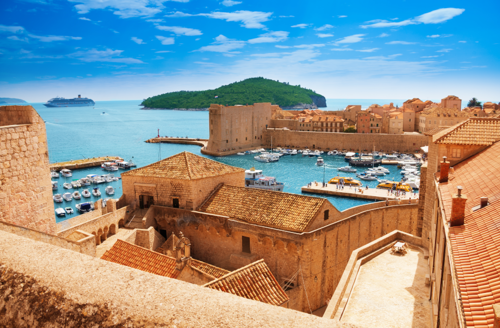
Croatia's stunning coastline spans over 1,100 miles along the Adriatic Sea and is adorned with unspoiled beaches, ancient towns, and a multitude of islands. This picturesque destination seamlessly combines rich historical heritage with breathtaking natural landscapes, making it a great place for visitors to enjoy. Experience this coastline by boat on our Croatia & the Makarska Riviera.
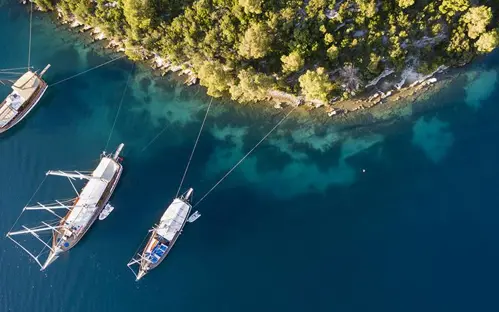
The beautiful Croatian archipelago is home to an impressive 1,244 islands, islets, and crags. However, only 48 of these stunning locations are inhabited, meaning that the rest are unspoilt land for exploring. Each island boasts its own unique charm, breathtaking landscapes, and fascinating stories. Visit a handful of our favourite islands on our Croatian Island Explorer.
Due to its location in Southeast Europe, Croatia shares borders with five neighbouring countries, which are Slovenia, Hungary, Serbia, Montenegro, and Bosnia & Herzegovina. This geographical position highlights Croatia's pivotal role in regional dynamics and means that the country has had some interesting historical influences.
Dinara Mountain attracts hikers and nature enthusiasts with its breathtaking views. The mountain's highest peak, Sinjal, reaches an impressive height of 1,831 metres, making it a must-visit destination for anyone seeking panoramic views.
In 2013, Croatia became a member of the EU, which was a major milestone in its journey of recovery and reintegration into Europe after the Croatian War of Independence. Furthermore, as a NATO member since 2009, it actively contributes to regional security.
Most countries have population growth, but Croatia is facing challenges with its aging population and emigration, which have resulted in a steady decline in the country's population. To tackle these demographic changes, Croatia is implementing a range of strategies such as encouraging immigration.
Nikola Tesla, the brilliant inventor and engineer, was born in the village of Smiljan in 1856, which is now part of modern-day Croatia. Today, his childhood home has been transformed into a museum that pays tribute to his remarkable life and groundbreaking contributions such as AC power, radio, and the famous Tesla Coil.
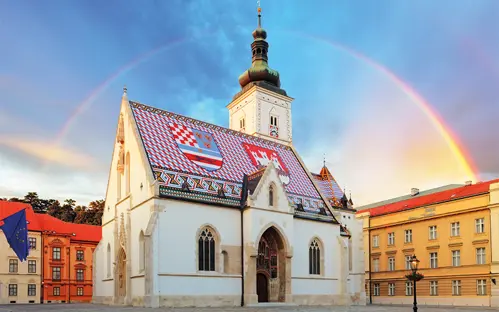
Zagreb is the political, economic, and cultural heart of Croatia. It offers a lively street culture, historic architecture, and a rich diversity of cultural experiences. The city harmoniously combines its medieval heritage with modern charm, making it a popular destination for visitors who want to see the best that the country has to offer.
On June 25, 1991, Croatia made a momentous decision to proclaim its independence from Yugoslavia. This crucial choice initiated a series of occurrences that have significantly influenced the contemporary history of the country, signifying the commencement of a fresh era defined by self-governance and a unique sense of national identity.
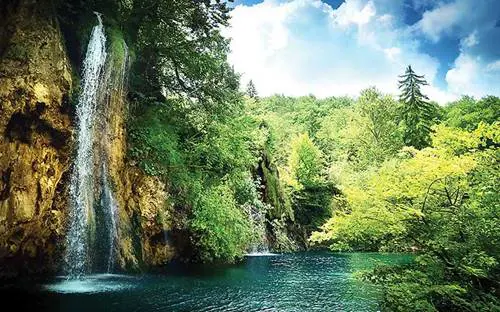
Croatia prides itself on having eight magnificent national parks, each highlighting unique landscapes and ecosystems. From the mesmerising Plitvice Lakes waterfalls to the serene Brijuni islands, these parks truly embody the breathtaking natural beauty of Croatia. There are great destinations if you want to see mountains, waterfalls and unspoilt wilderness. Visit the UNESCO-listed Plitvice National Park on our Croatia's Istrian Coast tour.
Croatia's extensive historical background, strategic geographical position, and cultural associations have contributed to a significant presence of bilingual or multilingual individuals within its populace. In particular, the younger generation frequently possesses fluency in Italian, German, and English, utilising these languages as their secondary means of communication.
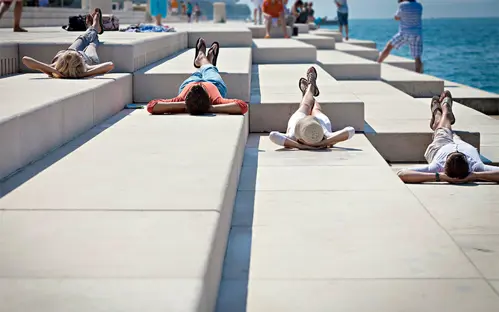
The Sea Organ in Zadar beautifully blends architectural design with the natural world. By harnessing the power of crashing waves through its submerged tubes, it creates enchanting melodies that transform the coastal area into a captivating symphony. Visitors can enjoy this delightful experience firsthand on our Croatia & the Makarska Riviera tour or Croatian Island Explorer tour.
After declaring independence in 1991, Croatia was thrust into a brutal conflict called the Croatian War of Independence. This war was primarily fought over territorial control and autonomy, resulting in significant losses for Croatia. Despite the tremendous challenges faced, however, Croatia emerged from the war with its sovereignty firmly established.
Croatia was one of the republics that comprised the Socialist Federal Republic of Yugoslavia from the conclusion of World War I until the early 1990s. Throughout this period, Croatia underwent notable transformations in its political, cultural, and economic aspects.
During World War II, Croatia was ruled by a fascist and ultranationalist group known as the Ustaše. This group established the Independent State of Croatia and aligned themselves with Nazi Germany and Fascist Italy. Under their control, numerous acts of violence were committed against Serbs, Jews, Roma, and even Croatians who opposed fascism.
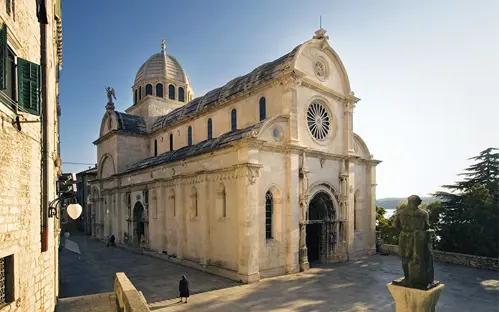
Croatia is home to one of the oldest continuously inhabited cities in the world. People have been living in Šibenik, on the Adriatic coast, for over one thousand years. Walk these ancient streets for yourself on our Croatian Island Explorer tour.
Rijeka was honoured with the prestigious title of European Capital of Culture for 2020, acknowledging its deep cultural roots and historical significance. This recognition highlights the city's thriving artistic community, captivating musical traditions, and intriguing historical landmarks, attracting tourists from across Europe.
Dalmatian dogs, famous for their distinct black or liver spots coat pattern, originated in the Dalmatia region of Croatia. Over time, these dogs have served various purposes, including being loyal guardians, joyful mascots in firehouses, and reliable companions during carriage rides.
Croatia's coastal regions enjoy a pleasant Mediterranean climate, boasting around 2,700 hours of sunshine every year. Destinations like Hvar and Split are especially renowned for their abundant sunshine, attracting numerous tourists.
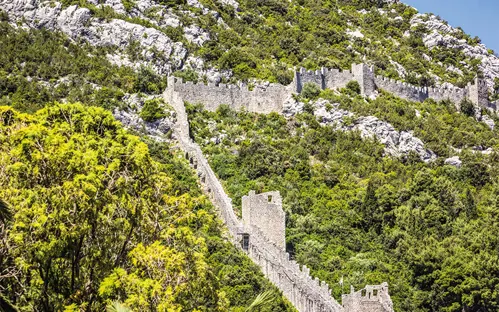
The Walls of Ston, known as the "European Wall of China," are a stunning collection of stone defensive walls located in southern Croatia. These expansive fortifications stretch an impressive 5.5 kilometres, showcasing the rich historical legacy of the medieval era in this region.
Education has always been a top priority in Croatia, evident from its impressive literacy rate of over 99%. This exceptional accomplishment places Croatia among the highest-ranking countries globally when it comes to education and literacy. These remarkable statistics underscore Croatia's steadfast dedication to fostering learning and the pursuit of knowledge.
The Croatian national flag features three horizontal bands in red, white, and blue, inspired by the Pan-Slavic colours. In the center of the flag, there is an emblem that showcases a checkerboard pattern representing the diverse regions of Croatia. The emblem also includes five smaller shields, symbolising Croatia's rich historical heritage.
Zagorski štrukli, a beloved culinary delight from the northern region of Zagorje in Croatia, is a delicious treat. These delightful pastry parcels are traditionally filled with cream cheese and can be prepared by boiling or baking. They’re made and eaten all over the country.
In Split, Croatia, you can find the impressive Dalmatia Tower standing tall at a height of 115 metres. This sleek and modern high-rise building creates an intriguing contrast with the city's historic architecture, showcasing the perfect blend of timeless charm and contemporary design that is characteristic of this country.
We’ve gone over a lot of interesting facts about the culture and land of Croatia, but here are some more light-hearted facts.
The name of Croatia's currency, the Kuna, originates from the Croatian word for "marten," which is a small mammal similar to a weasel. In the region's history, marten pelts were used as a means of trade and payment, making it a natural name for currency.
Located in the Istrian Peninsula, Hum is famously known as the smallest town globally. Boasting around 20 inhabitants, this charming village has preserved its medieval allure through its ancient fortifications and cobblestone pathways.
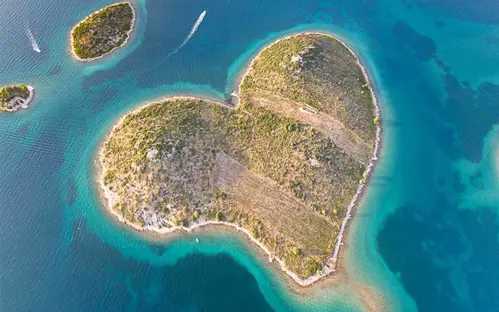
Galešnjak, popularly referred to as the "Lover's Island," formed in a naturally occurring heart shape that has fascinated couples worldwide. Located in the Adriatic Sea, its distinctive and romantic outline has made it a symbol of love and a viral sensation when observed from satellite images.
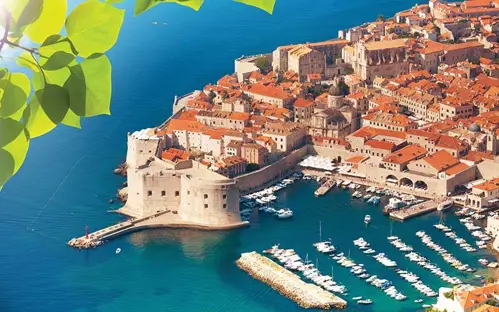
The television series "Game of Thrones" gained international acclaim and highlighted various stunning locations in Croatia. Among these, Dubrovnik prominently served as the setting for King's Landing. This heightened exposure significantly increased Croatia's allure as a travel destination, captivating both ardent fans of the show and general tourists alike. Stay in this stunning city on our Deluxe Dubrovnik & The Dalmatian Coast tour.

In 1999, an extraordinary discovery put Croatia on the map for truffle enthusiasts. In the region of Istria, a massive white truffle weighing 1.31 kilograms was unearthed. This remarkable find not only earned recognition from the Guinness World Records but also solidified Croatia's reputation as a top destination for truffle hunting and showcased the importance of truffles in its rich culinary culture.
Embark on a fascinating exploration into the rich history and vibrant culture of Croatia with Just You, the ultimate travel experience designed exclusively for solo adventurers who crave a deeper connection with their destination. At Just You, we understand that solo travel is about more than just seeing the sights; it's about forging connections and creating shared memories. With us, you'll not only delve into the heart of Croatia's captivating past but also embrace its dynamic present.
Step back in time and immerse yourself in the centuries-old heritage of Croatia as you traverse its ancient cities, like the magnificent Dubrovnik, where medieval walls embrace a treasure trove of historical sites waiting to be discovered. Our Deluxe Dubrovnik & the Dalmatian Coast Tour promises to whisk you away on a captivating journey through the ages.
Dive further into Croatia's diverse heritage as you venture beyond the city limits to explore Roman ruins, medieval castles, and charming coastal towns, all revealed to you on our Croatian Island Explorer Tour. It's an opportunity to witness the layers of history that have shaped this enchanting country.